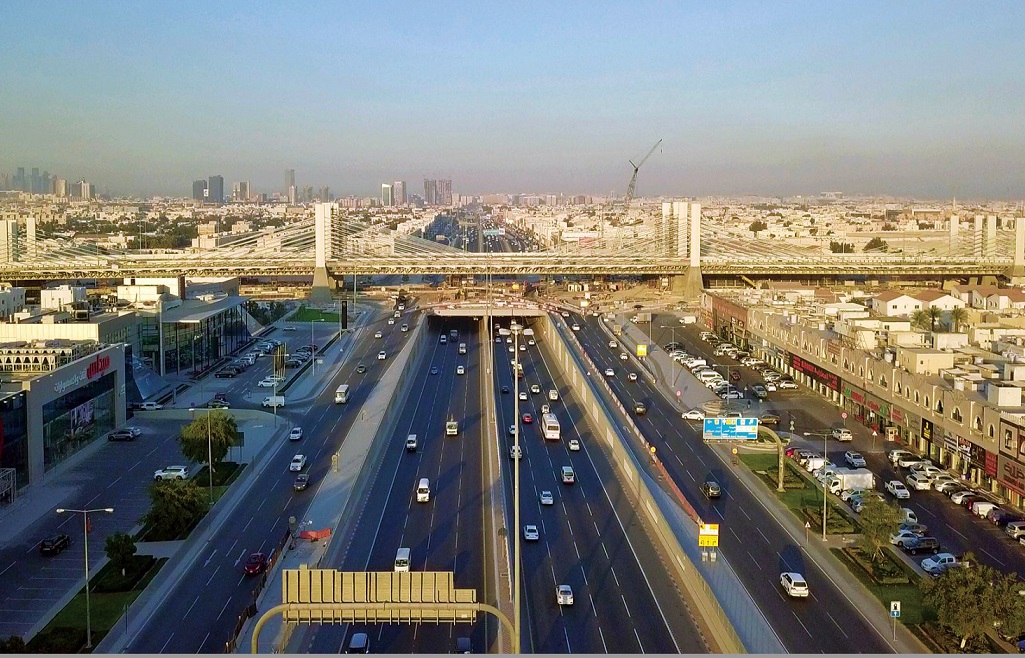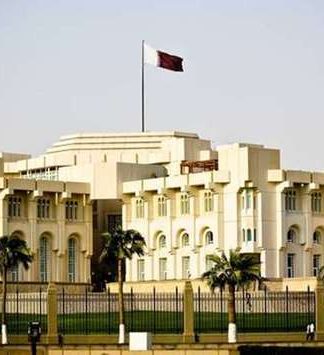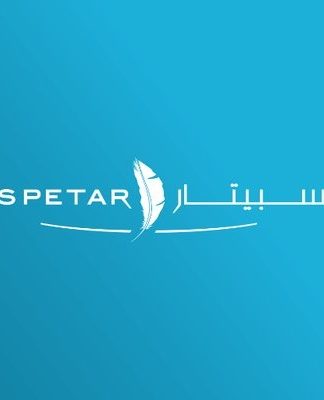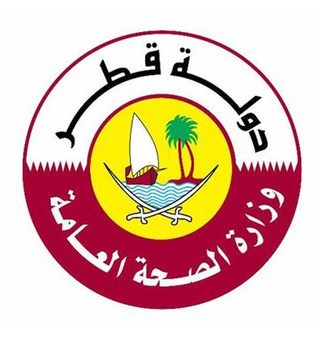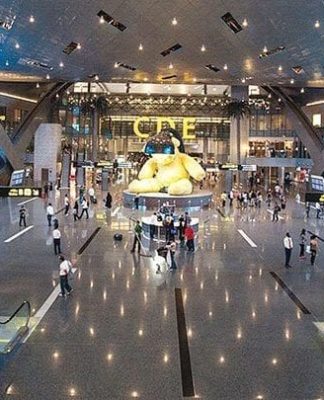The “Sabah Al Ahmad Corridor” project is one of the most important projects implemented by the Public Works Authority “Ashghal”, as it is considered a new lung for Doha.
Ashghal relied, in implementing the project, on the local element, whether through locally made materials or Qatari companies, in line with the state’s drive to support the local product.
“Ashghal” officials said in exclusive statements to Qatar News Agency (QNA) on the sidelines of the ceremony held today to mark the opening of the “Sabah Al-Ahmad Corridor”, that 60 percent of the materials used in the implementation of the project are locally manufactured, indicating that it will lead to great traffic flow. In Doha.
They noted that the “Sabah Al-Ahmad Corridor” will also contribute greatly to facilitating access to six 2022 FIFA World Cup stadiums.
Engineer Badr Darwish, Director of Highway Projects Department at Ashghal, confirmed that the opening of the Sabah Al-Ahmad Corridor, in conjunction with the national celebrations of the sisterly State of Kuwait and the anniversary of liberation, comes as a consolidation of brotherly relations between the two brotherly countries and a culmination of the efforts made by the State of Kuwait for reunification and the achievement of the Gulf interest.
In a special statement to Qatar News Agency / QNA / on the sidelines of the ceremony held today on the occasion of the celebration of the opening of the Sabah Al-Ahmad Corridor, Engineer Darwish indicated that the main road was opened to traffic a few months ahead of schedule, pointing out that the construction work of the project was not affected by the Corona pandemic (Covid-) 19).
Engineer Badr Darwish praised the efforts of the state that resulted in the completion of the project works as soon as possible, indicating that the project was implemented using locally-made materials, as the percentage of those materials reached 60%, explaining that Ashghal focuses on relying on the local element, whether through Homemade materials, or Qatari companies, in line with the state’s drive to support the local product.
Darwish indicated that the project included 6,300,000 cubic meters of excavation, filling and paving works, using approximately 1,442,000 tons of asphalt and 1,520,000 cubic meters of reinforced concrete. In addition, 220 km of communication lines and about 470 km of power lines have been installed. In addition, 205 kilometers of sewage extensions and about 77 kilometers of treated wastewater lines were constructed.
The Director of the Highway Projects Department at Ashgal said, “The Sabah Al-Ahmad Corridor is considered the” lung of Doha “and will greatly contribute to reducing traffic congestion in Doha in general, especially for those coming from south to north, as the road is an ideal alternative to the Doha Expressway and 22 February Street What brings great traffic flow. “
In this context, he explained that coming from Hamad International Airport via the Sabah Al-Ahmad Corridor, for example, will be able to reach Umm Lekhba Interchange in less than 18 minutes, while the same journey through Doha Expressway and 22 February Street takes about 50 minutes, which is This means saving about 70 percent of travel time.
Al-Darwish noted that this new road is a major link in front of those coming from the south of Qatar to its north through the city of Doha, as it will integrate the Doha Expressway with its southern part (parallel Al Wakra) and connect to Mesaieed Road through the intersection of Al Thumama Stadium, which is considered a distribution point to the road Doha Express on one side and the Sabah Al Ahmad Corridor on the other.
As for the distinctive elements of the Sabah Al-Ahmad Corridor, engineer Darwish indicated that this road is the first road bearing the name of “Mehwar”, indicating that its writing on the indicative panels was done through the use of a different script, such as the one used to write the “Way of Glory” on the plates to distinguish it from the rest of the road names. And the streets in Qatar.
Darwish touched on the integration of Mesaimeer Bridge with Bohamour Bridge and the Suspension Bridge, explaining that Mesaimeer Bridge extends 1600 meters long and Bu Hamour Bridge with a length of 900 meters to facilitate the traffic coming from the south of the Sabah Al Ahmad Corridor towards the suspension bridge at Halul and Faleh Bin Nasser intersection.
For his part, Eng. Yousef Al-Emadi, Director of Projects Affairs at the Public Works Authority “Ashghal”, said that the Sabah Al-Ahmad Corridor extending from Hamad International Airport in the south to Umm Lekhba Interchange, known as (Landmark Interchange) in the north, on the North Road is more than 29 km . The number of lanes of Sabah Al-Ahmad Corridor is four lanes in each direction to accommodate more than 20,000 vehicles per hour in both directions, stressing that this makes it an alternative and an important option for vehicle-goers on the Doha Expressway and 22 February Street, which accommodates about 12,000 thousand vehicles per hour in both directions. .
Engineer Yousef Al-Emadi stated in a similar statement to Qatar News Agency (QNA) that the implementation of this project was carried out in conjunction with the development of many side and perpendicular roads to the Sabah Al-Ahmad Corridor, bringing the total project work to about 41 kilometers, praising the directives of the government that contributed to the completion of the project before The date set for it, and those directives restricted the implementation of most of the project’s work by using local materials.
He pointed out that the old roundabouts and light intersections have been converted into 18 multi-level intersections and 30 bridges in addition to 15 car tunnels to provide free traffic.
He added, “The Sabah Al-Ahmad Corridor also includes the construction of pedestrian crossings to include 7 bridges and two pedestrian tunnels to provide safe movement, in addition to bicycle and pedestrian paths of 50.5 km, in addition to beautifying and afforesting an area estimated at 355,642 square meters.”
Al-Emadi emphasized that the new axis is a major link linking about 15 major roads such as Doha Expressway, Al Wakra Road, Ras Bu Abboud Street, G-Ring Road, Industrial Area Road, Salwa Road, Al Rayyan Road, Al Waab Street and Al Luqta Street to Al Markhiya Street and Al Shamal Road, which serves more than 25 areas. Residential housing units with high population density such as Al-Thumama, Bohamour, Al-Waab, Al-Rayyan, Al-Luqta, Al-Gharrafa and others
He stressed that the Sabah Al-Ahmad Corridor will contribute significantly to facilitating access to 6 stadiums from the 2022 FIFA World Cup stadiums, such as Ras Bouaboud Stadium, Al Thumama Stadium, Al Janoub Stadium, Khalifa International Stadium, Education City Stadium and Ahmed Bin Ali Stadium, in addition to many other sports facilities such as Aspire. Zone, Jassim bin Hamad Stadium (Al Sadd), Ali bin Hamad Al Attiyah Hall and Al Gharafa Stadium.
He explained that the corridor project is integrated with the metro network by linking several stations such as the free zone station, Al Waab station, Al Rayyan Al Qadim station, Uqba bin Nafi and Fareej Sudan, noting that it also contributes to linking the most important economic establishments in the country from Hamad International Airport through the free economic zone and the market. Al-Baladi road to the commercial facilities near Salwa Road, Al Waab Street and Al Shamal Road at Umm Lekhba Interchange. The road also facilitates access to the Industrial Area through its connection with the Industrial Area Road.
As for health facilities, Engineer Yousef Al-Emadi explained that the Sabah Al-Ahmad Corridor, by connecting it to the highway network in the country, is the best way to reach health facilities in the areas that the corridor connects, such as Sidra Medicine Hospital, Mesaimeer Health Center and Al-Thumamah Center. The axis also facilitates access to many educational institutions such as Qatar Foundation and Education City, as well as many nearby schools and institutes.
In turn, Eng. Ali Muhammad Al-Darwish, the engineer of the Sabah Al-Ahmad Corridor project at the Public Works Authority “Ashghal”, confirmed that the Sabah Al-Ahmad Corridor includes the longest bridge in the country with a length of 2.6 km extending over Al Waab Interchange, Merrikh Interchange and Sanaa Bu Hasa Interchange, where the vital bridge consists of four Lanes in each direction to provide traffic flow in front of those coming from Salwa Road and Al Waab in the direction of Al-Rayyan and Al-Rayyan Road and vice versa.
Engineer Al-Darwish stated in a special statement to Qatar News Agency / QNA / on the sidelines of the ceremony held on the occasion of the celebration of the opening of the Sabah Al-Ahmad Corridor, that the suspended bridge in the Sabah Al-Ahmad Corridor, supported by cables, is 1,200 meters long, and it was designed to be without columns for a distance of 150 meters, taking When constructing the bridge, all safety factors are taken into account, including supporting the bridge with about 120 cables and 754 precast concrete pieces each weighing more than 200 tons and erecting 20 columns and 16 pillars, bringing the height of the highest point of the bridge to 30 meters.
Al-Darwish added that the bridge will cause a great leap in traffic due to its strategic location over Halul and Faleh bin Nasser intersection on Salwa Road, as it will receive traffic coming to and from Hamad International Airport and will reduce traffic pressure on parallel streets such as the Central Market Street and Doha Expressway.
Eng. Al-Darwish touched on the intersections and tunnels along the Sabah Al-Ahmad Corridor, stressing that the opening of Al-Waab Interchange after converting it from a traffic light to a three-level intersection will improve traffic movement in all directions and facilitate access to many important roads such as Doha Expressway, Salwa Road, and the axis Sabah Al-Ahmad, as the intersection consists of 3 bridges, in addition to a traffic light on Al Waab Street, and will provide traffic flow to Al Waab, Fareej Al Sudan, Al Sadd and Muhairaa areas, reaching Al Rayyan and Muaither, where there are many different schools and educational and health facilities in addition to residential complexes and commercial facilities. The intersection will also facilitate access to a number of sports facilities such as Khalifa International Stadium, Jassim bin Hamad Stadium (Al Sadd), Ali bin Hamad Al Attiyah Hall and Aspire Zone, in addition to metro stations for the nearby Golden Line such as Sudan Station and Al Waab Station.
Regarding the Merrikh intersection, the engineer of the Sabah Al-Ahmad Corridor project added, “The Merrikh intersection is integrated with the Al-Waab Interchange, especially after converting the roundabout known as Lekhwiya Roundabout into a two-level intersection, as it is considered a major access link that provides traffic parallel to Al Waab Street to connect traffic coming from Doha Expressway in the direction of Sabah Al-Ahmad Corridor and Al-Khafous Street, reaching Al Furousiya Street, to reduce the traffic pressure on Al-Waab Street. The Merikh Interchange is also connected to the intersection known as Al-Mukafaha Interchange, which connects Sabah Al-Ahmad Corridor to Al-Rayyan Road, which will reduce the parallel traffic movement on Doha Expressway and 22 February Street.
Al-Darwish pointed out that the project also includes the Al-Rayyan tunnel, as it is considered the longest and deepest two-way tunnel in a diameter of 2.1 km to extend under each of the Badi intersection, known as Al-Mukafaha intersection, at a depth of 25 meters, where the tunnel connects the traffic coming from Al Waab and Mars and Makkah intersections in the area. Snapshot without the need to use Al Rayyan Road.
The project also includes an intersection known as Makkah Interchange, which consists of a bridge with four lanes in each direction that provides a free flow of traffic between Al-Rayyan and Al-Gharafa, and an intersection with light signals that facilitates access to Al-Luqta area by using light signals.
Al-Darwish continued to talk in the same context, indicating that the axis also includes the Al-Luqta Tunnel with a length of 500 meters that intersects with Khalifa Street, to link directly between Al-Luqta and Al-Gharafa, and to provide an alternative road to the nearby tilted intersection. The works of 11 km, which is the first in Qatar in terms of the number of levels, as it consists of four levels and contains nine bridges that provide free traffic flow in all directions, and includes the second highest bridge in Qatar with a height of 30 meters.
“The importance of the interchange increases as it serves as the northern gate to Doha and a distribution point due to its strategic location, as the interchange is located at the entrance to the northern gate of the city of Doha, where the heavy traffic movement to and from the city of Doha from the north direction, and it is located in an important spot where the North Road intersects with the Sabah Corridor. Al-Ahmad. “
“The interchange is located in a densely populated area and a vital commercial activity, as there are many government institutions, educational and health facilities, as well as commercial complexes and markets, and it accommodates more than 20,000 vehicles per hour,” he added.
Engineer Al-Darwish concluded his statement that the interchange will reduce traffic pressure on Al-Shamal Road, especially at Al-Gharrafa intersection known as Passport Interchange and Al-Duhail Interchange. It will also achieve a large traffic flow in front of those coming from Doha Corniche, Al Markhiya, Khalifa City and Duhail in the direction of Al Shamal Road, Sabah Al Ahmad Corridor, Al Gharafa and Gharrafat Al Rayyan areas, reaching Laqta and Al Rayyan.














